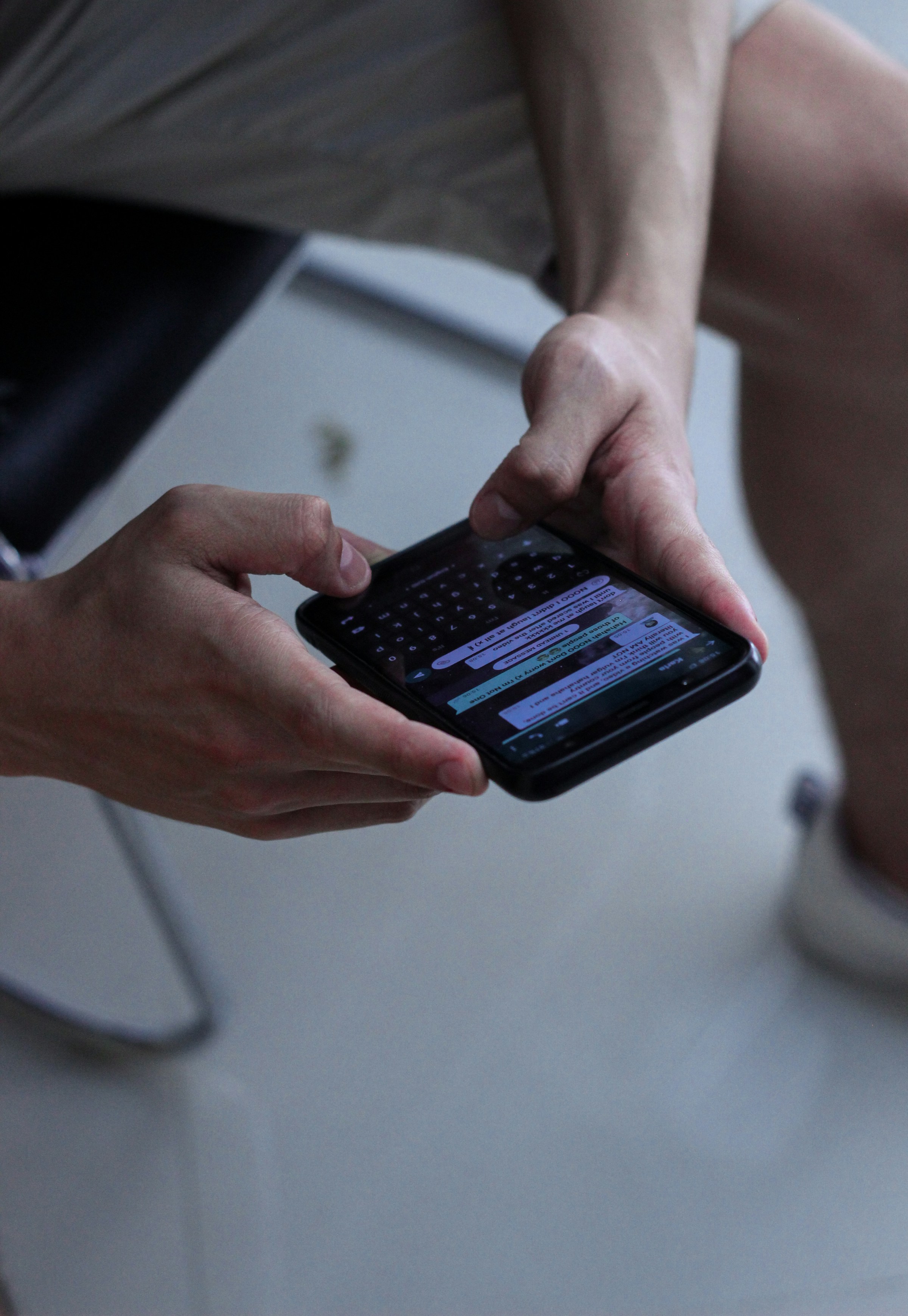Ghosting scrambles more than a chat thread. It throws off your attention and your sense of what to expect from people. The urge to fix the past can be strong, yet the wiser task is to read the present. Reconnection is not a plea for explanation. It is a small and careful test of reality that protects your time and steadies your nervous system. When you frame it this way, you make clearer choices, you keep your dignity, and you leave far less room for guesswork.
Begin with a reset. That does not mean a grand declaration or a dramatic goodbye to your phone. It means a short, deliberate break from the person’s profile and your own archived messages. Give yourself a few days of ordinary living with ordinary rhythms. Sleep at a normal hour. Move your body. Eat food that leaves you clear rather than foggy. This steady baseline matters more than people admit. A calmer body writes a calmer message, and a calmer message gets you closer to the truth. If you cannot get to that baseline yet, it is not a failure to wait. It is a sign that you need more recovery before you decide.
Clarity needs an objective. Say it out loud so that your mind has something firm to hold. I want to know whether we can resume contact. This objective is different from a wish for closure or a hunt for a perfect apology. You are not chasing a story that makes sense of the silence. You are running a simple test. Either the person can meet you in the present with consistent action or they cannot. That objective becomes your stop line. It keeps you from negotiating against yourself or adding new conditions every time your emotions surge.
Time limits are a kindness to both people. Choose a short response window and keep it. Two days is plenty. If you send a message on Tuesday morning, you will wait until Thursday morning for a reply. This rule is not about playing hard to get. It is about protecting your attention from the slow drain of checking and rechecking. You do not add a second message. You do not switch platforms to hunt them down. You do not escalate through friends or social pages. The rule stands because rules save you from pouring certain time into uncertain outcomes.
Use the channel where your last stable exchange happened. If your most natural conversations lived in WhatsApp, go there. If you had a pattern of talking in Instagram DMs, use that. Do not jump to email unless that was already normal. Switching channels can read like pursuit. You are not pursuing. You are offering an easy path back to ordinary contact and seeing whether the other person chooses it.
Your message should acknowledge the gap without heat, state a present intention, and offer a single next step that requires little effort. Keep it short. Keep it specific. Keep it human. A few lines can carry all the meaning you need. You might write that the conversation went quiet, that you enjoyed speaking with them, and that you are open to catching up. Offer one or two concrete times that work for you within the next week. Name a light setting that you can honour without stress. If neither time fits, wish them well. That is the whole note. You do not send a ledger of hurt. You do not send a script of what they must say in order to be forgiven. You do not send a cliffhanger that invites more ambiguity. A short and grounded message does more work than a long appeal.
Send it when your calendar can back your words. A late night note that you cannot follow through on the next day creates noise, not momentum. A message sent during a work surge may set you up for resentment if you receive a yes that you are too frazzled to honour. Signal reliability by aligning your outreach with real availability. Reliable people are easier to trust, and trust is the only ground on which reconnection can stand.
Then you wait. The waiting is where many people break their own protocol. Avoid the obsessive loop of checking every few minutes. Put your notifications on a summary schedule if you must. Fill the space with things that reinforce your baseline. Work blocks without constant interruption. A walk after lunch. A simple dinner. The world continues while the message sits there, and you will think more clearly if you let yourself live inside that world.
If a reply arrives, read it once and put the phone down for a moment. Your first surge of feeling can be strong and may not be the best guide. Let the spike ease, then come back to decide which path you are on. A clear yes sounds like specifics. It contains a day, a time, or a place. It mirrors the energy of your message and carries it forward. When you see that, answer with one concrete plan and close the loop. Confirm the day, name the spot, and take responsibility for the booking if needed. Skip a long postmortem over text. You will learn more from one kept plan than from paragraphs of explanation composed on a screen.
Sometimes the reply is warm yet noncommittal. It may say that you should catch up soon and that it would be nice, but it does not land on anything real. This is where people tend to get stuck, because a soft maybe can trigger endless persuasion. You do not need persuasion. Convert the soft energy into a binary with a gentle anchor. Offer two options next week and invite them to pick one if they are keen. If they want this, they will choose. If they do not, they will drift. Let drift be your data rather than an invitation to send another prompt.
Silence is data as well. So are replies that ignore your clear offer and move the conversation sideways. Your time limit handled this outcome in advance. When the window closes, send a brief and respectful close. You can say that now may not be a good time and that you wish them well. Then mute or archive the thread. Blocking is for safety concerns or when obsession needs a firm wall. Muting protects your attention without turning the situation into a larger story in your head.
If you meet, keep the conversation inside the present. You do not need to pry for an origin story for the silence. Many people cannot explain why they withdrew. The story they tell can be honest, and it can also be a shield. Behaviour in the present is your cleaner signal. Do plans get made and held. Does the conversation flow without effort or does it feel like you are pushing a heavy cart uphill. One good meeting with a kept commitment teaches you more than several long explanations typed into a phone.
Apologies can be accepted simply if you wish to continue. Thank them once, acknowledge the effort, and move to a clear next step if you want one. If you do not want to continue, say so with grace and finality. You do not need to list your reasons. A clean no is a gift to both people because it ends the loop without blame.
As you test reconnection, watch your own nervous system with the same care you bring to reading theirs. Two signals matter. How you feel after contact. How reliable the other person is over the next two weeks. If you end the call or the meeting feeling steady, that is a useful sign. If you end it jittery or heavy, that is also information. If the person follows through more than once in a row, that builds a case for trust. If they slip back into vague replies and moving targets, that undermines it. Make your decision on these signals. Do not rely on romantic momentum or fear of being alone to guide you.
Life has edge cases. Illness, family pulls, sudden work strain. It is reasonable to grant a one time extension when a reason is specific and when the next step comes from them unprompted. There is a difference between a foggy promise to try another time and a clear line that says next Tuesday at seven and names a place. One is smoke. The other is a plan.
Language is a tool for self respect. Speak in facts when you talk to yourself and when you update trusted friends. Describe what happened without guessing at motives. We spoke a few times. It went quiet for two weeks. I sent one message. I offered two times. There was no reply. I closed it after two days. Facts keep you in executive function. Stories pull you back into rumination and into the exhausting work of mind reading.
If reconnection succeeds, do not sprint. Keep your life full of the activities that make you steady. Sleep at regular hours. Move your body. Keep your promises to yourself and to your calendar. Reliability needs time stamps and repetition. When you see those, you can invest more. If you do not see those, you already know how to step away.
If it fails, resist the impulse to measure your worth against the outcome. Measure the system you used. Did you reset. Did you set an objective. Did you send one clear message. Did you keep a time limit. Did you close the loop. If yes, then the system worked as designed, because its purpose was not to guarantee a happy ending. Its purpose was to give you clarity without draining your life.
Self respect is not a slogan for difficult days. It is a pattern of actions that you can repeat. You choose a frame that values clarity. You align your outreach with your calendar and your values. You do not beg for attention. You also do not hold on to anger like a trophy. You return your focus to what you can control. That is how you stay light while you heal, and it is how you stay generous with yourself even when things sting.
You do not have to reach out at all. Silence is also a valid path. If your system is brittle right now, protect it. Settle your sleep. Fill your time with steady friendships. Attend to your work and your body. A healthy baseline will make your judgments sharper. The right connection will not force you to abandon yourself in order to build it.
In the end, reconnection is not a cinematic reunion. It is a small decision tree you walk through with care. You offer a simple path. You wait a short time. You accept the data that returns. If it leads to a calm yes, you move forward with slow confidence. If it leads to nothing, you move forward with your life. Either way, you remain intact, and that is the deeper win.














